Key Takeaways
- Leverage job portals like 9cv9 and local recruitment agencies to access a diverse talent pool in Indiana.
- Stay updated on Indiana’s hiring laws and workforce trends to ensure compliance and attract top candidates.
- Implement effective onboarding and retention strategies to build a skilled and engaged workforce in 2025.
Hiring the right employees is one of the most critical factors that determine a company’s success.
In Indiana, a state known for its thriving industries such as manufacturing, logistics, healthcare, and technology, finding skilled talent requires a strategic and informed approach.
With the job market evolving due to technological advancements, demographic shifts, and economic changes, employers in Indiana must stay ahead of the competition by implementing modern recruitment strategies.

As businesses look to expand their workforce in 2025, they must navigate a range of challenges, including talent shortages in specialized fields, increased competition for highly skilled professionals, and the need to comply with state-specific employment laws.
Additionally, the rise of remote work, AI-driven hiring tools, and evolving employee expectations regarding work-life balance and benefits have reshaped how companies attract and retain talent.
Employers must adopt innovative approaches to hiring that align with both industry trends and the expectations of job seekers.
Indiana’s labor market in 2025 presents both opportunities and challenges.
The state continues to experience growth in key sectors, particularly in advanced manufacturing, life sciences, information technology, and renewable energy.
However, the demand for skilled workers often exceeds supply, making it crucial for businesses to use multiple recruitment channels, from traditional job boards and local hiring events to AI-powered applicant tracking systems and social media outreach.
Moreover, employers must remain compliant with federal and state labor laws, including fair hiring practices, equal employment opportunity regulations, and workplace safety requirements.
A well-structured hiring process not only ensures legal compliance but also improves the efficiency of recruitment efforts, leading to a stronger, more engaged workforce.
This guide will provide a comprehensive roadmap for finding and hiring employees in Indiana in 2025.
It will cover key aspects such as understanding the state’s job market, leveraging digital and traditional recruitment platforms, optimizing candidate screening and interview processes, and ensuring smooth onboarding for long-term employee retention.
Whether you are a startup looking to build a talented team or an established company aiming to scale your workforce, this blog will offer actionable insights to help you attract, hire, and retain top talent in Indiana’s competitive job market.
Before we venture further into this article, we would like to share who we are and what we do.
About 9cv9
9cv9 is a business tech startup based in Singapore and Asia, with a strong presence all over the world.
With over nine years of startup and business experience, and being highly involved in connecting with thousands of companies and startups, the 9cv9 team has listed some important learning points in this overview of How to Find and Hire Employees in Indiana, USA in 2025.
If your company needs recruitment and headhunting services to hire top-quality employees, you can use 9cv9 headhunting and recruitment services to hire top talents and candidates. Find out more here, or send over an email to [email protected].
Or just post 1 free job posting here at 9cv9 Hiring Portal in under 10 minutes.
How to Find and Hire Employees in Indiana, USA in 2025
- Understanding the Job Market in Indiana (2025)
- Preparing for the Hiring Process
- Where to Find Potential Employees in Indiana
- Navigating Indiana’s Hiring Laws and Regulations
- Screening and Interviewing Candidates
- Making an Offer and Onboarding New Hires
- Retaining Employees in Indiana
- Future Trends in Hiring and Workforce Development in Indiana
1. Understanding the Job Market in Indiana (2025)
Indiana’s job market in 2025 continues to evolve, driven by economic growth, industry expansion, and workforce shifts. Employers seeking to hire in the state must understand key employment trends, workforce demographics, and industry-specific hiring demands. With a strong presence in manufacturing, healthcare, logistics, and technology, Indiana presents significant opportunities for businesses looking to attract skilled talent. However, competition for qualified workers, shifting employee expectations, and emerging automation trends are reshaping hiring strategies.
Economic Outlook and Industry Growth
- Manufacturing Dominance:
- Indiana remains one of the top states for manufacturing employment, contributing significantly to the state’s economy.
- Growth in automotive production, advanced manufacturing, and aerospace sectors continues to drive demand for skilled workers.
- Companies like Subaru, Cummins, and Eli Lilly are expanding operations, increasing the need for engineers, machinists, and assembly line workers.
- Technology and IT Sector Expansion:
- Indiana is experiencing rapid growth in software development, cybersecurity, and AI-driven technology solutions.
- Indianapolis has emerged as a tech hub, with startups and established firms like Salesforce and Infosysexpanding their presence.
- Employers require skilled professionals in cloud computing, data analytics, and AI development to meet industry demand.
- Healthcare and Life Sciences Growth:
- Indiana’s aging population is increasing demand for healthcare professionals, particularly in nursing, home healthcare, and medical technology.
- Major employers such as Indiana University Health, Community Health Network, and Eli Lillycontinue hiring across medical and research fields.
- The rise of telehealth services has also created new job roles, including virtual care specialists and health data analysts.
- Logistics and E-commerce Expansion:
- Due to its central location and strong transportation infrastructure, Indiana remains a logistics hub, attracting major distribution centers.
- Companies like Amazon, FedEx, and Walmart are continually expanding their fulfillment centers, creating job opportunities in supply chain management, warehousing, and last-mile delivery services.
- Increased automation in warehousing is transforming job roles, requiring more technicians, robotics specialists, and logistics analysts.
- Renewable Energy and Green Jobs:
- Indiana is investing in wind, solar, and bioenergy initiatives, driving demand for workers in the renewable energy sector.
- Companies specializing in solar panel installation, wind turbine maintenance, and sustainable energy consulting are actively hiring skilled labor.
In-Demand Job Roles and Skill Shortages
- High-Demand Jobs in 2025:
- Healthcare Professionals: Registered nurses, medical assistants, home health aides, and medical lab technicians.
- IT & Tech Specialists: Software engineers, cybersecurity analysts, cloud computing experts, and data scientists.
- Advanced Manufacturing Workers: CNC machinists, robotics engineers, and industrial maintenance technicians.
- Logistics & Transportation Personnel: Supply chain analysts, truck drivers, warehouse managers, and logistics coordinators.
- Renewable Energy Technicians: Solar panel installers, wind turbine engineers, and energy auditors.
- Skill Shortages in Key Sectors:
- STEM Talent Gap: Despite growth in the technology sector, Indiana faces shortages in AI development, machine learning, and cybersecurity.
- Healthcare Staffing Issues: A rising demand for nurses and medical assistants has outpaced the available workforce, leading to hiring challenges.
- Manufacturing Skills Deficit: Employers struggle to find CNC machine operators, automation engineers, and skilled tradespeople due to declining interest in traditional vocational careers.
- Truck Driver Shortage: With logistics at the core of Indiana’s economy, the ongoing shortage of CDL-licensed truck drivers affects supply chain operations.
Hiring Trends and Workforce Demographics
- Growth of Remote and Hybrid Work Models:
- Post-pandemic workforce trends have led to an increase in remote and hybrid job opportunities.
- Companies in technology, marketing, and financial services are shifting to flexible work environments to attract top talent.
- Remote work has also expanded hiring pools, allowing businesses to recruit talent from across the country.
- Diverse and Multigenerational Workforce:
- Employers must accommodate a multigenerational workforce comprising Baby Boomers, Gen X, Millennials, and Gen Z employees.
- Younger workers prioritize career development, work-life balance, and company culture, influencing recruitment strategies.
- Companies are investing in diversity, equity, and inclusion (DEI) programs to attract and retain a broader talent pool.
- Impact of AI and Automation on Hiring:
- Artificial intelligence and automation are reshaping job roles, particularly in manufacturing, logistics, and IT.
- While automation increases efficiency, it also requires upskilling existing employees in digital tools and AI integration.
- Companies adopting AI-driven hiring solutions improve candidate screening, interview scheduling, and talent assessments.
Opportunities and Challenges for Employers
- Opportunities for Businesses Hiring in Indiana:
- A business-friendly regulatory environment with tax incentives for companies expanding in Indiana.
- Strong educational institutions, such as Purdue University and Indiana University, providing a steady pipeline of graduates in STEM and healthcare fields.
- Workforce development programs and state-funded training initiatives help businesses reskill workers for emerging job roles.
- Challenges Employers Must Overcome:
- High competition for skilled workers in industries such as IT, healthcare, and advanced manufacturing.
- Retention issues, as employees seek higher wages, flexible work conditions, and career advancement opportunities.
- Adapting to changing employment laws and compliance regulations, including wage laws, worker protections, and labor union influences.
Conclusion
The job market in Indiana in 2025 presents both challenges and opportunities for employers seeking to hire top talent. As industries evolve, businesses must stay informed about emerging workforce trends, skill shortages, and hiring best practices. By leveraging a mix of digital recruitment tools, workforce development programs, and strategic employer branding, companies can attract and retain skilled employees. Understanding the shifting labor landscape will be essential for building a resilient and competitive workforce in Indiana.
2. Preparing for the Hiring Process
A successful hiring process requires thorough preparation to attract, evaluate, and onboard the right talent. In Indiana’s evolving job market, employers must stay ahead of hiring trends, leverage digital recruitment strategies, and ensure compliance with state and federal employment laws. Preparing for the hiring process involves several critical steps, from defining job roles and optimizing recruitment strategies to conducting fair and effective interviews. This section explores key factors that businesses must consider to build a strong hiring process in Indiana in 2025.
Defining Hiring Needs and Job Requirements
- Assess Workforce Gaps and Business Needs:
- Conduct internal workforce assessments to determine skill gaps within the company.
- Identify positions that need immediate filling and those that will be required for future business growth.
- Analyze department-specific needs, such as IT, manufacturing, sales, or customer support.
- Create Clear and Detailed Job Descriptions:
- Outline specific job duties, required skills, educational background, and experience level.
- Highlight soft skills such as communication, leadership, and adaptability, which are crucial for long-term success.
- Include company culture, benefits, and career growth opportunities to attract quality candidates.
- Example: A Logistics Manager job description should specify experience in supply chain management, warehouse operations, and team leadership.
- Determine Salary and Benefits Competitive in Indiana’s Market:
- Research industry-specific salary benchmarks using tools like Glassdoor, Payscale, and Bureau of Labor Statistics reports.
- Ensure compensation aligns with Indiana’s minimum wage laws and market expectations.
- Offer competitive benefits such as healthcare, paid time off, retirement plans, tuition reimbursement, and remote work options.
- Example: IT professionals in Indianapolis expect remote work flexibility and competitive stock options as part of their compensation package.
Choosing the Right Recruitment Channels
- Utilizing Online Job Platforms and AI-Powered Recruitment Tools:
- Post job openings on LinkedIn, Indeed, ZipRecruiter, and Indiana Career Connect.
- Leverage AI-driven applicant tracking systems (ATS) like Greenhouse, Lever, or Workday to streamline resume screening.
- Use chatbots for automated candidate engagement and pre-screening assessments.
- Networking and Employer Branding Strategies:
- Attend Indiana job fairs, career expos, and industry conferences to meet potential candidates in person.
- Strengthen employer branding through employee testimonials, behind-the-scenes workplace videos, and diversity & inclusion initiatives.
- Partner with universities and vocational training centers, such as Purdue University and Ivy Tech Community College, to recruit graduates.
- Tapping into Local Workforce Development Programs:
- Utilize state-funded hiring programs such as Indiana Next Level Jobs to find skilled workers.
- Engage with workforce development boards and apprenticeship programs to fill skilled labor positions.
- Example: Manufacturers hiring CNC machinists can partner with Ivy Tech’s Advanced Manufacturing Program to recruit trained candidates.
Screening and Evaluating Candidates Efficiently
- Developing a Standardized Resume Review Process:
- Use ATS filters to prioritize candidates based on skills, experience, and education.
- Look for certifications and relevant industry training, such as CompTIA certifications for IT roles or CDL licenses for trucking jobs.
- Avoid bias by focusing on skills-based hiring rather than traditional degree requirements when possible.
- Conducting Structured Interviews for Objective Hiring Decisions:
- Prepare a set of standardized behavioral and technical interview questions for consistency.
- Implement video interviews to streamline early-stage screening, especially for remote candidates.
- Example: A healthcare recruiter hiring a nurse should ask scenario-based questions like, “How would you handle a patient emergency situation?”
- Utilizing Pre-Employment Assessments and Skills Tests:
- Implement job-specific skills tests for technical roles such as coding challenges for software developers or mechanical aptitude tests for engineers.
- Use personality and cognitive ability assessments to evaluate cultural fit and decision-making skills.
- Example: Customer service roles may require a situational judgment test to assess problem-solving abilities.
Ensuring Compliance with Indiana Employment Laws
- Understanding Indiana’s Hiring and Labor Laws:
- Stay updated on Indiana’s employment regulations, including minimum wage laws, overtime rules, and equal opportunity employment policies.
- Comply with federal laws such as the Fair Labor Standards Act (FLSA) and Americans with Disabilities Act (ADA).
- Ensure hiring practices align with EEOC (Equal Employment Opportunity Commission) guidelines to prevent discrimination.
- Conducting Background Checks and Employment Verification:
- Follow Indiana state laws regarding criminal background checks and pre-employment drug testing.
- Use E-Verify to confirm employment eligibility for new hires.
- Obtain written consent from candidates before conducting background screenings.
- Providing Fair Hiring Practices and Avoiding Discrimination:
- Implement blind resume reviews to reduce unconscious bias in hiring.
- Avoid asking questions related to age, marital status, or disability during interviews.
- Example: If hiring a warehouse worker, focus on job-related physical requirements rather than personal attributes.
Building a Strong Onboarding Process
- Creating a Comprehensive New Hire Orientation Program:
- Provide structured onboarding schedules, including HR paperwork, compliance training, and company culture sessions.
- Assign mentors or onboarding buddies to help new employees integrate smoothly.
- Example: A remote software engineer should receive a virtual onboarding kit with logins, documentation, and team introductions.
- Setting Clear Performance Expectations and Career Growth Opportunities:
- Establish key performance indicators (KPIs) to track employee progress.
- Offer career development plans, such as tuition reimbursement, leadership training, and professional certifications.
- Example: IT firms hiring cybersecurity analysts should provide access to continuing education in ethical hacking and risk management.
- Ensuring Employee Engagement and Retention from Day One:
- Encourage open communication and feedback through regular check-ins and performance reviews.
- Foster a positive workplace culture by offering flexible work arrangements, wellness programs, and team-building activities.
- Example: Logistics companies can improve retention by offering competitive overtime pay and career advancement opportunities for warehouse workers.
Conclusion
Preparing for the hiring process in Indiana in 2025 requires a strategic approach that incorporates market research, recruitment planning, compliance adherence, and effective onboarding strategies. By leveraging modern hiring tools, workforce development programs, and structured evaluation techniques, businesses can attract, hire, and retain top talent in Indiana’s competitive job market. Employers who invest in clear job descriptions, fair hiring practices, and strong employee engagement will position themselves for long-term success.
3. Where to Find Potential Employees in Indiana
Finding the right employees in Indiana requires a strategic approach that leverages online job portals, recruitment agencies, workforce development programs, networking events, and educational institutions. In 2025, employers must utilize AI-driven hiring platforms, social media recruitment, and local talent pools to secure top candidates. Below is a detailed guide on the best places to find potential employees in Indiana.
1. Online Job Portals and Recruitment Platforms
Online job portals remain one of the most effective ways to connect with job seekers in Indiana. Employers can reach a diverse pool of candidates by posting job openings on top job boards and AI-powered recruitment platforms.
- 9cv9 Job Portal
- 9cv9 is a leading job portal that helps employers in Indiana post job listings, screen applicants, and match with top talent using AI-driven recruitment technology.
- Offers candidate tracking, automated resume screening, and employer branding services.
- Example: A tech startup in Indianapolis can use 9cv9’s job portal to hire software engineers and digital marketers efficiently.
- 9cv9 Recruitment Agency
- Employers looking for end-to-end recruitment solutions can benefit from 9cv9 Recruitment Agency, which provides talent sourcing, pre-screening, and direct hiring assistance.
- Ideal for hiring niche roles in IT, finance, healthcare, and logistics.
- Example: A manufacturing firm in Fort Wayne struggling to hire CNC machinists can partner with 9cv9 Recruitment Agency to access skilled workers quickly.
- Indiana Career Connect
- Official state-run job matching and workforce development platform.
- Employers can post jobs for free and access job seeker resumes, hiring incentives, and labor market insights.
- National Job Portals
- Indeed, LinkedIn, Glassdoor, ZipRecruiter – These platforms attract both local Indiana talent and national job seekers looking to relocate.
- Employers can sponsor job ads for greater visibility and use AI-powered candidate recommendations.
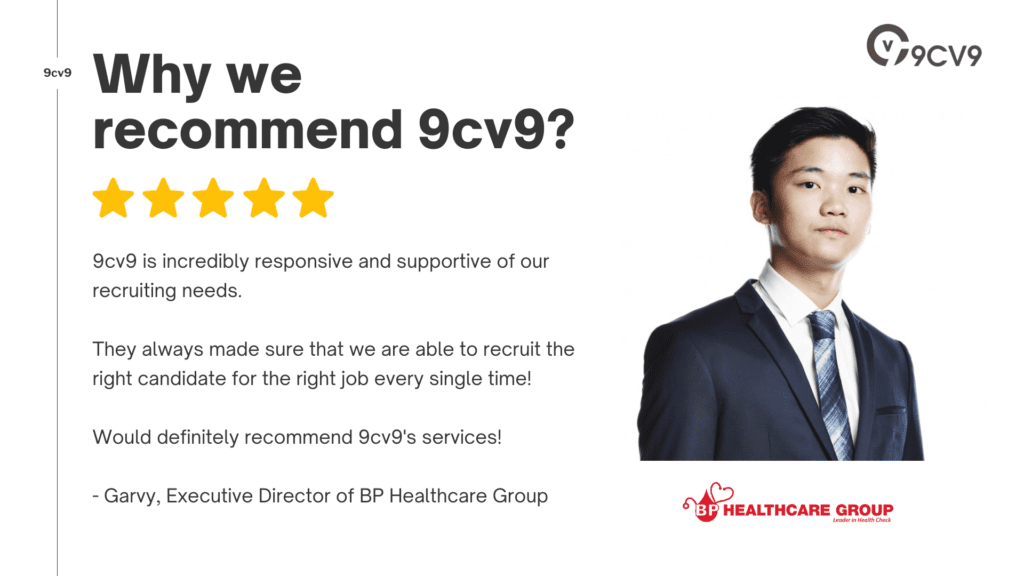
2. Recruitment Agencies and Staffing Firms
Working with recruitment agencies can streamline hiring processes, particularly for specialized industries and high-demand roles.
- 9cv9 Recruitment Agency
- Specializes in technology, engineering, finance, and customer service roles.
- Provides pre-vetted candidates, AI-powered matching, and customized hiring solutions.
- Example: A financial firm in Evansville looking for data analysts and risk managers can use 9cv9 Recruitment Agency for fast hiring.
- Specialized Staffing Firms in Indiana
- Robert Half – Best for accounting, finance, and IT professionals.
- Kelly Services – Offers temporary, temp-to-hire, and direct placement services for various industries.
- Aerotek – Focuses on engineering, healthcare, and manufacturing roles.
- Local Temp Agencies for Short-Term and Seasonal Hiring
- Express Employment Professionals – Helps businesses find seasonal warehouse workers, administrative staff, and retail associates.
- PeopleReady – Connects employers with temporary laborers, event staff, and construction workers.
3. Universities, Colleges, and Technical Schools
Hiring fresh graduates, interns, and entry-level talent from Indiana’s educational institutions is a cost-effective strategy for businesses.
- Top Universities and Colleges for Recruiting Graduates
- Purdue University – Strong candidates for engineering, data science, and business roles.
- Indiana University Bloomington – Known for marketing, healthcare, and research professionals.
- University of Notre Dame – Great for finance, law, and cybersecurity specialists.
- Technical and Vocational Training Schools for Skilled Workers
- Ivy Tech Community College – Offers certifications in IT, healthcare, and advanced manufacturing.
- Vincennes University – Specializes in automotive technology, logistics, and aviation maintenance.
- Lincoln Tech Indianapolis – Trains electricians, HVAC technicians, and mechanics.
- Internship and Apprenticeship Programs
- Employers can partner with universities and workforce development boards to set up internship pipelines and apprenticeships.
- Example: A logistics company in Gary can recruit interns from Ivy Tech’s Supply Chain Management program.
4. Workforce Development Programs and Government Hiring Initiatives
Indiana’s government offers state-funded hiring programs, job training grants, and employment incentives for businesses looking to hire.
- Next Level Jobs Indiana
- Provides training grants for employers hiring high-demand roles in healthcare, IT, manufacturing, and construction.
- Helps companies upskill new hires through tuition assistance programs.
- Indiana Department of Workforce Development (DWD)
- Offers free job posting services, labor market data, and recruitment assistance for employers.
- Example: A healthcare provider in South Bend can use DWD services to recruit registered nurses and medical assistants.
- Veteran Hiring Programs
- Hire a Hoosier Vet initiative helps employers connect with military veterans transitioning into civilian jobs.
- Example: A defense contractor in Columbus can hire ex-military personnel for security and engineering roles.
5. Industry-Specific Networking Events and Job Fairs
Attending career expos, industry conferences, and hiring events helps businesses connect with top-tier talent in Indiana.
- Indiana Career Fairs and Hiring Expos
- Indiana Statewide Job Fair – Annual event attracting job seekers from all industries.
- TechPoint Job Fair (Indianapolis) – Ideal for hiring software developers, AI specialists, and IT support staff.
- Manufacturing and Logistics Hiring Expo – Connects employers with forklift operators, machinists, and logistics coordinators.
- Industry Conferences and Trade Shows
- IndyBigData Conference – Best for hiring AI engineers, cybersecurity experts, and data scientists.
- Midwest Healthcare Innovation Summit – Ideal for recruiting medical professionals, nurses, and biotech researchers.
- Campus Recruitment Events
- Partnering with universities and career centers to host on-campus recruitment days and information sessions.
- Example: An insurance company in Fort Wayne can sponsor a finance career fair at Indiana University Bloomington.
6. Social Media Recruitment and Employee Referrals
Social media and employee referral programs help companies tap into hidden talent pools and expand their recruitment reach.
- Social Media Hiring Strategies
- LinkedIn Recruiter – Best for headhunting professionals and direct outreach.
- Facebook Jobs – Effective for blue-collar and customer service hiring.
- Twitter and Reddit Communities – Engage with niche tech talent and freelancers.
- Employee Referral Programs
- Offer cash bonuses, extra vacation days, or gift cards to employees who refer qualified candidates.
- Example: A cybersecurity firm in Carmel can encourage employees to refer ethical hackers and security analysts.
Conclusion
Employers in Indiana can maximize their hiring success by leveraging online job portals, recruitment agencies like 9cv9, workforce development programs, and social media recruitment. By combining AI-powered hiring tools, targeted job fairs, university partnerships, and government incentives, businesses can build a strong and diverse workforce for 2025.
4. Navigating Indiana’s Hiring Laws and Regulations
Hiring employees in Indiana requires compliance with state and federal employment laws to ensure fair labor practices, avoid legal penalties, and create a secure workplace. Employers must stay updated with Indiana’s hiring regulations, wage laws, anti-discrimination policies, and employee classification rules to make informed hiring decisions. Below is a comprehensive guide to navigating Indiana’s hiring laws and regulations in 2025.
1. Understanding Employment Laws in Indiana
Indiana follows a mix of state-specific employment laws and federal labor regulations. Employers must comply with the following:
- At-Will Employment
- Indiana is an at-will employment state, meaning employers can terminate employees at any time for any lawful reason.
- Employees can also quit their job without legal consequences, except in cases where a contract specifies otherwise.
- Example: A retail store in Fort Wayne can terminate an employee for repeated tardiness, but not for discriminatory reasons.
- Fair Labor Standards Act (FLSA) Compliance
- Employers must follow federal wage and hour laws, including overtime pay and record-keeping requirements.
- Example: A manufacturing company in Evansville must ensure that workers clocking over 40 hours a week receive overtime pay.
- Right-to-Work Laws
- Indiana is a right-to-work state, meaning employees cannot be required to join a labor union as a condition of employment.
- Example: A construction firm in Indianapolis cannot force its workers to pay union fees as part of employment.
2. Wage and Hour Laws in Indiana
Employers must adhere to Indiana’s minimum wage laws, overtime regulations, and payroll policies to avoid labor law violations.
- Minimum Wage Requirements
- As of 2025, Indiana’s minimum wage remains $7.25 per hour, aligning with the federal standard.
- Employers offering tipped positions must ensure workers earn at least $2.13 per hour in base wages, with tips covering the remainder to meet minimum wage standards.
- Example: A restaurant in Bloomington must track tip earnings to ensure that waitstaff receive the required hourly wage.
- Overtime and Exemptions
- Employees working over 40 hours per week must receive overtime pay at 1.5 times their regular wage.
- Exempt employees (such as executives, IT professionals, and salaried workers) may not qualify for overtime.
- Example: A software engineer at a tech startup in Carmel might be exempt from overtime if they meet the salary threshold and job duties test.
- Payroll and Wage Transparency
- Employers must provide clear wage statements, detailing hours worked, deductions, and gross pay.
- Example: A logistics company in South Bend must maintain accurate payroll records to prevent wage disputes.
3. Anti-Discrimination and Equal Employment Opportunity (EEO) Laws
Indiana employers must comply with federal and state anti-discrimination laws to promote fair hiring practices.
- Protected Classes in Indiana
- Employers cannot discriminate based on race, color, religion, sex, national origin, age (40+), disability, genetic information, or veteran status.
- Example: A marketing agency in Indianapolis cannot reject a qualified applicant based on their age or gender.
- Americans with Disabilities Act (ADA) Compliance
- Employers must provide reasonable accommodations for employees with disabilities.
- Example: A call center in Fort Wayne must adjust workstation setups for employees with mobility impairments.
- Ban the Box Law (Criminal Background Checks)
- Indiana does not have a statewide Ban the Box law, but some cities and counties restrict employers from asking about criminal history on job applications.
- Example: A finance company in Gary can conduct a background check only after extending a conditional job offer.
4. Employee Classification: Full-Time, Part-Time, and Independent Contractors
Employers must correctly classify workers to comply with tax, benefits, and labor law requirements.
- Full-Time vs. Part-Time Employees
- Indiana law does not define full-time employment, but most businesses classify it as 35-40+ hours per week.
- Part-time workers may not be entitled to benefits like health insurance and paid leave, depending on company policies.
- Independent Contractors vs. Employees
- Employers must use the IRS 1099 vs. W-2 test to determine if a worker qualifies as an independent contractor.
- Misclassifying employees as contractors can lead to fines, back wages, and legal action.
- Example: A graphic design firm in Lafayette hiring freelancers must ensure they meet contractor criteria, such as using their own equipment and setting their own work hours.
5. Background Checks and Drug Testing Policies
Employers can conduct background screenings and drug tests but must follow privacy and consent regulations.
- Criminal Background Checks
- Allowed in most industries, but employers must notify applicants and obtain written consent before conducting a check.
- Example: A childcare center in Bloomington must run background checks to ensure the safety of children.
- Pre-Employment Drug Testing
- Employers can require pre-employment and random drug testing, especially in safety-sensitive industries like transportation, healthcare, and manufacturing.
- Indiana follows federal DOT drug testing regulations for commercial drivers.
- Example: A trucking company in Terre Haute must conduct regular drug screenings for CDL drivers.
6. Workplace Safety and Workers’ Compensation Laws
Indiana employers must maintain safe working conditions and provide workers’ compensation coverage for employees.
- OSHA Compliance and Workplace Safety
- Businesses must follow OSHA safety standards to prevent workplace injuries.
- Employers must report serious workplace injuries within 8 hours.
- Example: A construction company in Evansville must provide protective gear and training to workers handling heavy machinery.
- Workers’ Compensation Insurance Requirements
- Employers must carry workers’ compensation insurance for all employees, regardless of company size.
- Covers medical expenses, lost wages, and rehabilitation costs for workplace injuries.
- Example: A warehouse in Hammond must cover medical expenses if an employee sustains a lifting injury.
7. Hiring Foreign Workers and Work Visa Compliance
Employers hiring non-U.S. citizens must comply with immigration and visa regulations.
- I-9 Employment Eligibility Verification
- All employers must complete Form I-9 to verify an employee’s identity and legal work status.
- Example: A tech firm in Indianapolis hiring an AI engineer from Canada must verify their work authorization.
- H-1B Visa Sponsorship for Skilled Workers
- Employers can sponsor highly skilled foreign workers through the H-1B visa program.
- Requires proof of a specialized job role and competitive wage offering.
- Example: A biotech company in West Lafayette hiring a biomedical researcher can file an H-1B petition.
- Seasonal Work Visas (H-2A & H-2B Programs)
- H-2A visas for agricultural workers and H-2B visas for non-agricultural seasonal jobs.
- Example: A farming business in southern Indiana hiring seasonal fruit pickers must comply with H-2A labor laws.
Conclusion
Navigating Indiana’s hiring laws in 2025 requires a thorough understanding of employment regulations, wage laws, background screening policies, and work visa compliance. Employers must stay updated on federal and state requirements to ensure fair hiring practices, avoid legal penalties, and create a compliant workforce. By following the latest Indiana labor laws and HR best practices, businesses can streamline hiring and build a legally sound employment structure.
5. Screening and Interviewing Candidates
Hiring the right employees in Indiana requires a structured and legally compliant screening and interview process. Employers must assess candidates based on skills, experience, and cultural fit while following federal and state hiring regulations. A well-defined screening and interview process helps reduce hiring risks, ensure workplace diversity, and improve retention rates.
Below is a comprehensive guide on screening and interviewing candidates in Indiana in 2025, covering best practices, legal compliance, and modern recruitment strategies.
1. Pre-Screening Candidates: Essential Steps
Before scheduling interviews, employers should pre-screen applicants to ensure they meet the minimum qualifications. This process saves time by eliminating underqualified or unsuitable candidates early on.
A. Reviewing Resumes and Applications
- Focus on key qualifications, work experience, certifications, and skills relevant to the job.
- Look for career progression, consistency in employment history, and notable achievements.
- Example: A software company in Indianapolis hiring a developer may prioritize candidates with Java or Python experience and industry certifications like AWS or Microsoft Azure.
B. Conducting Phone or Video Pre-Screening
- A 15-20 minute call can help assess communication skills, work availability, and salary expectations.
- Ask about career goals, work preferences, and why they applied for the role.
- Example: A hospital in Fort Wayne hiring a nurse might use phone screening to confirm state licensure and shift flexibility.
C. Utilizing AI and Automated Screening Tools
- Companies can leverage AI recruitment software like 9cv9 Job Portal to automate resume screening and identify best-matching candidates.
- AI tools can scan thousands of resumes in minutes, saving recruiters time.
- Example: A marketing agency in Bloomington using 9cv9 Recruitment Agency can filter applications based on SEO expertise, Google Ads certifications, and social media management experience.
2. Structuring a Legally Compliant Interview Process
Indiana employers must conduct interviews fairly while following EEOC (Equal Employment Opportunity Commission) guidelines and state labor laws.
A. Understanding Indiana’s Anti-Discrimination Laws
- Employers cannot ask questions about race, gender, age, marital status, disability, religion, or sexual orientation.
- Indiana law prohibits discriminatory hiring practices, even in casual conversations.
- Example: A manufacturing company in Evansville interviewing a female engineer cannot ask about future family planning or maternity leave plans.
B. Avoiding Illegal Interview Questions
- Questions that violate federal and Indiana labor laws include:
- “Are you a U.S. citizen?” (Instead, ask: “Are you authorized to work in the U.S.?”)
- “How old are you?” (Instead, ask: “Are you over the age of 18?”)
- “Do you have a disability?” (Instead, ask: “Are you able to perform the essential job duties with or without accommodations?”)
- Example: A finance firm in South Bend must ensure all interviewers use standardized, legally approved questions to avoid discrimination lawsuits.
C. Conducting Structured Interviews
- Use a consistent set of questions for all candidates to ensure fairness.
- Example: A tech startup in Carmel hiring a UI/UX designer may ask:
- “Tell me about a time you improved a website’s user experience.”
- “What tools do you use for wireframing and prototyping?”
3. Types of Interview Methods Used in Indiana
Companies in Indiana use different interview formats based on job roles, company culture, and recruitment efficiency.
A. One-on-One Interviews
- Traditional face-to-face or virtual interviews with one recruiter or hiring manager.
- Best for senior leadership roles, specialized positions, and confidential discussions.
- Example: A law firm in Indianapolis hiring a senior attorney may prefer one-on-one discussions to evaluate legal expertise and client interaction skills.
B. Panel Interviews
- A group of 2-5 interviewers from different departments interview a candidate together.
- Useful for collaborative work environments, high-stakes roles, or executive hiring.
- Example: A university in Bloomington hiring a department chair may have faculty members, HR personnel, and senior administrators on the panel.
C. Behavioral and Situational Interviews
- Behavioral Questions: Assess how a candidate handled past work situations.
- Example: “Tell me about a time you had to deal with a difficult client.”
- Situational Questions: Test problem-solving abilities with hypothetical job scenarios.
- Example: “How would you handle a deadline conflict between two critical projects?”
D. Skills-Based and Technical Interviews
- Used in engineering, IT, finance, healthcare, and skilled trades.
- Candidates may complete live coding tests, case studies, or hands-on practical exercises.
- Example: A cybersecurity firm in Fort Wayne may ask candidates to identify vulnerabilities in a simulated network.
E. Group Interviews
- Conducted with multiple candidates at once, often used for high-volume hiring.
- Example: A call center in Gary hiring multiple customer service representatives may conduct group discussions to evaluate teamwork, problem-solving, and communication skills.
F. Video Interviews (Virtual Hiring)
- Many Indiana businesses use Zoom, Microsoft Teams, or AI-powered interview platforms.
- Saves time and expands talent pools for remote or hybrid positions.
- Example: A tech company in Indianapolis recruiting remote software developers may use pre-recorded video responses for initial screening.
4. Candidate Assessment and Decision-Making
Once interviews are complete, employers must evaluate candidates objectively to make informed hiring decisions.
A. Using a Scorecard for Fair Evaluation
- Assign scores to candidates based on:
- Job knowledge and skills
- Communication and professionalism
- Cultural fit and team collaboration
- Problem-solving abilities
- Example: A manufacturing plant in Lafayette may score candidates on safety compliance knowledge and operational experience.
B. Checking References and Background Verification
- Employers should verify a candidate’s employment history, credentials, and criminal background (if applicable).
- Indiana does not have a Ban the Box law, but some employers delay background checks until after a job offer.
- Example: A hospital in South Bend hiring a nurse must verify nursing licenses and malpractice history.
C. Offering the Job and Negotiating Compensation
- Provide a clear job offer letter outlining:
- Salary and benefits
- Work schedule and job expectations
- Probationary period (if applicable)
- Example: A logistics company in Hammond hiring a warehouse manager may negotiate shift schedules and performance bonuses.
Conclusion
Screening and interviewing candidates in Indiana in 2025 requires a well-structured, legally compliant approach that aligns with modern recruitment practices. Employers should leverage technology, structured interviews, and fair evaluation methods to find the best-fit employees. By following Indiana hiring laws and ethical recruitment practices, businesses can attract top talent while avoiding legal risks and discrimination claims.
6. Making an Offer and Onboarding New Hires
Successfully hiring a candidate in Indiana does not end with the interview process. Employers must carefully structure job offers and implement an effective onboarding process to ensure a smooth transition for new hires. A well-planned offer and onboarding strategy can increase employee engagement, reduce turnover, and enhance productivity.
This section provides a comprehensive guide to making a competitive job offer and creating an efficient onboarding experience for new hires in Indiana in 2025.
1. Making a Competitive and Legally Compliant Job Offer
Once a candidate has been selected, employers must draft a clear and attractive job offer that aligns with Indiana labor laws and industry standards.
A. Crafting a Strong Job Offer Letter
- The job offer should be detailed, professional, and legally sound.
- Essential elements to include:
- Job title and department
- Start date and work schedule
- Salary and benefits package
- Probationary period (if applicable)
- Reporting structure and direct supervisor
- At-will employment disclaimer (if applicable in Indiana)
- Conditions of employment (e.g., background check, drug test, NDA agreements)
- Example: A manufacturing company in Indianapolis may specify a 90-day probationary period and mandatory safety training for new hires.
B. Salary and Benefits Negotiation
- Be prepared for salary and benefits discussions if the candidate wants to negotiate.
- Offer competitive wages based on:
- Industry benchmarks in Indiana
- Cost of living adjustments
- Company budget and pay scale
- Example: A tech startup in Bloomington hiring a software developer may negotiate a flexible remote work policy and additional stock options to attract top talent.
C. Handling Background Checks and Pre-Employment Screenings
- Employers must comply with Indiana labor laws when conducting background checks.
- Common pre-employment screenings:
- Criminal background checks (Ensure compliance with the Fair Credit Reporting Act)
- Reference verification (Confirm previous employment details)
- Drug testing (Required in safety-sensitive industries like transportation and healthcare)
- Credit checks (Only if relevant to the role, such as finance positions)
- Example: A bank in Fort Wayne may require a credit history check for a loan officer position to assess financial responsibility.
2. Preparing for the New Hire’s First Day
Once the job offer is accepted, the onboarding process begins. A structured onboarding program is essential for helping new employees adapt to company culture, understand job expectations, and become productive quickly.
A. Sending a Pre-Boarding Welcome Package
- Before the first day, send an official welcome email with:
- A detailed onboarding schedule
- Company policies and employee handbook
- Payroll and benefits enrollment forms
- IT setup instructions (e.g., email login, software access)
- Introduction to the company’s mission, values, and goals
- Example: A marketing agency in Evansville may send a digital welcome kit with videos explaining company culture and an overview of key clients.
B. Assigning a Mentor or Onboarding Buddy
- Pairing a new hire with an experienced employee can:
- Increase engagement and retention rates
- Help new hires navigate company culture
- Provide a support system for job-related questions
- Example: A hospital in South Bend hiring new nurses may assign senior nurses as mentors to guide them through hospital protocols and patient care procedures.
3. First-Day and First-Week Onboarding Activities
The first few days are critical for setting expectations, building relationships, and ensuring compliance with company policies.
A. Conducting Orientation Sessions
- Introduce new employees to:
- Company history, mission, and vision
- Core business operations and organizational structure
- HR policies, attendance, and leave management
- Workplace safety protocols
- Example: A manufacturing firm in Lafayette may conduct a workplace safety training session on machine operations and hazard prevention.
B. Setting Up Workstations and IT Access
- Ensure new employees have access to:
- Company email, software, and communication tools
- Desks, computers, and security badges
- Required industry-specific tools or equipment
- Example: An IT firm in Carmel may provide new hires with company-issued laptops and cybersecurity training before granting access to company databases.
C. Conducting Initial Meetings with Key Team Members
- Schedule one-on-one meetings between the new hire and:
- Direct manager or supervisor
- HR representative for benefits and payroll setup
- Team members to encourage collaboration
- Example: A retail company in Indianapolis may introduce a new store manager to regional supervisors, inventory teams, and marketing staff.
4. Ongoing Training and Development
Effective onboarding extends beyond the first week. Employers must implement continuous training and development to ensure employees thrive in their roles.
A. Implementing a 30-60-90 Day Onboarding Plan
- First 30 days: Focus on learning company processes and role-specific responsibilities.
- Next 60 days: Assign independent projects and assess skill application.
- By 90 days: Conduct performance reviews and discuss long-term career growth.
- Example: A logistics company in Hammond may use a 90-day training program for new supply chain managers to learn warehouse operations, vendor negotiations, and fleet management.
B. Offering Continuous Learning and Career Growth Opportunities
- Provide access to:
- Online courses and certifications
- Workshops and industry conferences
- Internal mentorship programs
- Example: A software company in Bloomington may offer employees free access to AI development coursesto stay updated on emerging technology trends.
5. Monitoring Employee Satisfaction and Retention
Retention starts with a positive onboarding experience. Employers should track employee engagement and satisfaction to reduce turnover.
A. Conducting Employee Feedback Surveys
- Ask new hires about:
- Their first impressions of the company
- Challenges faced during onboarding
- Suggestions for improving the hiring process
- Example: A customer service center in Gary may conduct anonymous surveys to identify gaps in training and support for new hires.
B. Scheduling Regular Check-Ins
- Hold weekly or bi-weekly check-ins to address any concerns.
- Example: A real estate firm in Fort Wayne may schedule monthly one-on-one sessions to discuss employee goals and career development.
C. Recognizing and Rewarding New Employees
- Implement performance recognition programs to boost morale.
- Example: A finance company in Indianapolis may reward new employees with performance-based bonuses after completing the onboarding program.
Conclusion
Making a strong job offer and implementing an effective onboarding process are essential for attracting and retaining top talent in Indiana. Employers should focus on clear communication, structured training, and long-term employee development to ensure new hires become productive and engaged team members. A well-executed onboarding strategy not only improves employee satisfaction but also enhances overall workplace efficiency and business growth.
7. Retaining Employees in Indiana
Employee retention is a critical factor for business success in Indiana. As companies face an increasingly competitive job market in 2025, retaining top talent has become a strategic priority to reduce turnover costs, maintain productivity, and foster a positive workplace culture.
Indiana employers must implement effective retention strategies, focusing on competitive compensation, professional development, work-life balance, and strong company culture. This section explores key approaches to retaining employees in Indiana, with relevant examples and actionable insights.
1. Competitive Compensation and Benefits
Salary and benefits remain major deciding factors in whether employees stay or seek other opportunities.
A. Offering Competitive Salaries
- Conduct market research to ensure salaries remain competitive.
- Adjust pay scales to align with:
- Industry standards in Indiana
- Cost of living and inflation rates
- Experience and skill levels of employees
- Example: A tech startup in Indianapolis raises developer salaries annually based on skill advancements and company growth to retain skilled programmers.
B. Enhancing Benefits Packages
- Offer comprehensive health insurance that includes:
- Medical, dental, and vision coverage
- Mental health support and therapy sessions
- Flexible health savings accounts (HSAs) or wellness stipends
- Example: A manufacturing company in Fort Wayne provides onsite health clinics and fitness membershipsto promote employee well-being.
C. Providing Retirement and Financial Incentives
- Offer 401(k) matching programs to encourage long-term employment.
- Introduce stock options or profit-sharing plans to boost engagement.
- Example: A finance firm in Evansville offers employee stock options, leading to higher retention rates among senior analysts.
2. Creating a Positive Workplace Culture
A strong company culture encourages loyalty, engagement, and job satisfaction.
A. Fostering an Inclusive and Supportive Work Environment
- Promote diversity, equity, and inclusion (DEI) initiatives.
- Ensure all employees feel valued, heard, and respected.
- Example: A retail company in Gary implements quarterly DEI training and employee resource groups to promote workplace inclusion.
B. Recognizing and Rewarding Employee Contributions
- Implement employee recognition programs such as:
- Monthly or quarterly awards for top performers.
- Public appreciation through company newsletters or meetings.
- Bonus structures tied to performance milestones.
- Example: A healthcare provider in South Bend runs a “Caregiver of the Month” program, rewarding outstanding nurses with bonuses and extra PTO.
C. Encouraging Open Communication and Feedback
- Maintain transparent leadership and encourage employee input.
- Conduct:
- Regular one-on-one meetings with managers.
- Quarterly employee satisfaction surveys.
- Company-wide town hall meetings.
- Example: A logistics firm in Lafayette introduces anonymous feedback portals to address employee concerns proactively.
3. Career Growth and Development Opportunities
Employees are more likely to stay if they see clear career advancement pathways.
A. Providing Training and Upskilling Programs
- Offer online courses, workshops, and certification programs.
- Encourage cross-training to enhance skill sets.
- Example: A manufacturing company in Terre Haute offers leadership training for factory workers interested in supervisory roles.
B. Establishing Mentorship and Coaching Programs
- Pair employees with experienced mentors to guide career growth.
- Provide ongoing leadership training for aspiring managers.
- Example: A law firm in Bloomington assigns new associates to senior partners for mentorship and professional development.
C. Promoting Internal Mobility
- Encourage employees to apply for internal job openings.
- Develop succession planning to prepare employees for leadership roles.
- Example: A software company in Carmel fills 75% of management roles through internal promotions to retain top talent.
4. Work-Life Balance and Employee Well-Being
Burnout and stress are key contributors to employee turnover. Employers must prioritize work-life balance to retain their workforce.
A. Offering Flexible Work Arrangements
- Implement remote or hybrid work policies where possible.
- Offer flexible work hours to accommodate different lifestyles.
- Example: A marketing agency in Evansville allows employees to set their own work schedules to improve job satisfaction.
B. Encouraging Paid Time Off (PTO) and Mental Health Days
- Provide adequate vacation days, personal leave, and paid holidays.
- Encourage employees to take time off without guilt.
- Example: A tech company in Indianapolis offers “no-questions-asked” mental health days to reduce workplace stress.
C. Providing Wellness Programs and Support Services
- Offer onsite wellness programs, therapy sessions, and stress management workshops.
- Implement employee assistance programs (EAPs) to provide counseling services.
- Example: A hospital in Fort Wayne provides free therapy sessions for nurses to combat workplace stress.
5. Employee Engagement and Team Building
Engaged employees are more productive, satisfied, and likely to stay long-term.
A. Hosting Team-Building Activities and Social Events
- Organize:
- Quarterly team outings (bowling, escape rooms, company picnics).
- Virtual and in-person game nights or happy hours.
- Volunteer and community service events.
- Example: A retail chain in Indianapolis hosts an annual retreat to celebrate employee achievements and encourage bonding.
B. Encouraging Collaboration and Cross-Departmental Projects
- Develop cross-functional teams to foster teamwork.
- Implement peer-led training programs to encourage knowledge sharing.
- Example: A financial services firm in South Bend creates multi-department task forces to solve business challenges collaboratively.
C. Supporting Employee-Led Initiatives and Innovation
- Encourage employees to:
- Propose new ideas and improvements.
- Lead company initiatives or passion projects.
- Example: A tech company in Bloomington funds employee-led projects to develop new AI-driven tools.
6. Conducting Stay Interviews and Exit Interviews
A. Regular Stay Interviews to Address Employee Concerns
- Conduct one-on-one stay interviews to understand:
- What employees like about their job.
- What challenges they face.
- What would make them stay longer.
- Example: A real estate agency in Fort Wayne uses bi-annual stay interviews to identify pain points and improve retention strategies.
B. Analyzing Exit Interviews to Reduce Future Turnover
- Gather insights on:
- Reasons for leaving.
- Improvements needed in workplace culture or policies.
- Suggestions for future employee retention.
- Example: A logistics company in Hammond discovers through exit interviews that employees leave due to lack of career progression, leading them to revamp their promotion policies.
Conclusion
Retaining employees in Indiana in 2025 requires a multi-faceted approach that prioritizes competitive compensation, workplace culture, career development, and work-life balance. Companies that invest in long-term employee satisfaction and engagement will not only reduce turnover costs but also foster a loyal, motivated, and high-performing workforce. By understanding employee needs and proactively addressing concerns, Indiana employers can create a thriving workplace that attracts and retains top talent.
8. Future Trends in Hiring and Workforce Development in Indiana
The job market in Indiana is evolving rapidly due to technological advancements, demographic shifts, and economic transformations. In 2025, businesses must adapt to emerging hiring trends and workforce development strategies to attract and retain top talent. From the rise of AI-driven recruitment to the increasing focus on employee well-being, companies must stay ahead to remain competitive.
This section explores key hiring and workforce development trends shaping Indiana in 2025, providing relevant examples and actionable insights for businesses looking to build a future-ready workforce.
1. Rise of AI and Automation in Recruitment
Artificial intelligence (AI) and automation are reshaping hiring processes in Indiana, making recruitment faster, data-driven, and more efficient.
A. AI-Powered Resume Screening and Candidate Matching
- Companies are increasingly using AI-driven tools to:
- Analyze resumes and job applications efficiently.
- Identify top candidates based on skills, experience, and cultural fit.
- Reduce unconscious bias by relying on data-driven hiring decisions.
- Example: A logistics firm in Indianapolis uses an AI-powered applicant tracking system (ATS) to screen thousands of applications, reducing hiring time by 40%.
B. Automated Chatbots for Candidate Engagement
- AI chatbots assist with:
- Pre-screening applicants through automated Q&A sessions.
- Scheduling interviews with recruiters.
- Providing real-time updates on application status.
- Example: A healthcare provider in Fort Wayne implements an AI chatbot for initial nurse screenings, improving response times and enhancing the candidate experience.
C. AI-Driven Predictive Analytics for Workforce Planning
- AI tools analyze:
- Talent shortages and workforce demand trends.
- Employee retention risks and potential turnover rates.
- Skill gaps to inform hiring strategies.
- Example: A manufacturing plant in Evansville uses AI to predict workforce shortages and preemptively recruit for high-demand roles.
2. Increasing Demand for Skilled Workers and Upskilling Initiatives
As industries modernize and adopt advanced technologies, there is a growing demand for skilled workers across various sectors in Indiana.
A. Growth in Technical and Digital Skills Demand
- High-demand skills in 2025 include:
- Cybersecurity and data analysis.
- AI, cloud computing, and automation.
- Advanced manufacturing and engineering skills.
- Example: A software company in Carmel prioritizes hiring data scientists and cloud engineers as businesses shift towards AI-driven operations.
B. Expansion of Workforce Development Programs
- Businesses partner with community colleges and trade schools to:
- Offer industry-relevant training programs.
- Provide apprenticeships and certification courses.
- Prepare workers for high-growth industries.
- Example: A construction firm in South Bend collaborates with a local technical college to train electricians and welders, reducing skill shortages in the sector.
C. Employer-Sponsored Upskilling and Reskilling Initiatives
- Companies invest in continuous learning opportunities by:
- Offering tuition reimbursement for further education.
- Providing online courses and in-house training.
- Encouraging internal mobility and promotions.
- Example: A manufacturing company in Terre Haute provides free AI and automation training to factory workers, allowing them to transition into higher-paying technical roles.
3. Expansion of Remote and Hybrid Work Models
The demand for flexible work arrangements continues to grow, influencing hiring strategies and workforce expectations.
A. Shift Toward Permanent Hybrid Work Models
- Many companies implement hybrid work environments to:
- Enhance employee productivity and satisfaction.
- Reduce office space costs.
- Attract a wider talent pool.
- Example: A marketing agency in Indianapolis adopts a 3-day in-office, 2-day remote policy, increasing job applications by 30%.
B. Increased Hiring of Remote Employees Across State Borders
- Indiana companies hire out-of-state remote employees to:
- Tap into larger talent pools.
- Access specialized skills unavailable locally.
- Reduce hiring constraints due to local labor shortages.
- Example: A tech startup in Bloomington hires remote software developers from Illinois and Ohio, expanding its workforce without relocating employees.
C. Enhanced Remote Work Infrastructure and Policies
- Companies invest in:
- Cybersecurity measures to protect remote work data.
- Collaboration tools (Slack, Microsoft Teams, Zoom) for seamless communication.
- Well-defined remote work policies to maintain accountability.
- Example: A legal firm in Lafayette introduces a secure virtual office system, allowing attorneys to work remotely without compromising client confidentiality.
4. Greater Focus on Employee Well-Being and Mental Health
Employee well-being is a top priority in workforce development, with companies investing in mental health support and wellness initiatives.
A. Mental Health Benefits Integration
- Employers provide:
- Access to counseling services and therapy sessions.
- Employee Assistance Programs (EAPs) for stress management.
- Workplace wellness initiatives (yoga, mindfulness programs, gym memberships).
- Example: A finance company in Fort Wayne introduces on-site mental health counselors to help employees manage workplace stress.
B. Prioritizing Work-Life Balance
- Companies offer:
- Unlimited PTO policies or additional paid leave.
- Flexible work schedules to prevent burnout.
- Reduced work hours or four-day workweeks for better efficiency.
- Example: A hospital in Gary implements a 4-day workweek for non-essential staff, leading to higher job satisfaction.
C. Enhancing Diversity, Equity, and Inclusion (DEI) Initiatives
- Companies actively promote:
- Fair hiring practices to create diverse workforces.
- Leadership training programs for underrepresented groups.
- Transparent DEI policies to foster an inclusive workplace.
- Example: A manufacturing plant in Evansville partners with disability advocacy groups to improve job accessibility for workers with disabilities.
5. Data-Driven Hiring and Workforce Analytics
HR teams increasingly leverage big data to make informed hiring and workforce planning decisions.
A. Predictive Analytics for Talent Acquisition
- Employers use HR analytics tools to:
- Forecast hiring needs based on company growth.
- Identify employee retention risks.
- Improve recruitment marketing strategies.
- Example: A retail chain in South Bend utilizes AI-driven analytics to predict seasonal hiring demands, ensuring efficient staffing during peak sales periods.
B. Personalized Employee Engagement and Retention Strategies
- Companies analyze employee engagement data to:
- Improve workplace satisfaction.
- Tailor career growth plans based on performance trends.
- Reduce voluntary turnover through targeted retention efforts.
- Example: A tech firm in Bloomington personalizes career development plans for employees based on AI-driven performance data, increasing retention rates.
Conclusion
The future of hiring and workforce development in Indiana in 2025 is shaped by AI-driven recruitment, upskilling initiatives, flexible work arrangements, employee well-being programs, and data-driven workforce planning. Companies that embrace these trends will be better positioned to attract top talent, enhance employee satisfaction, and remain competitive in an evolving job market. By adapting to workforce changes and investing in employee growth, Indiana businesses can build a sustainable and future-ready workforce.
Conclusion
Finding and hiring the right employees in Indiana in 2025 requires a strategic, technology-driven, and employee-centric approach. As businesses navigate an evolving labor market shaped by AI advancements, remote work trends, workforce upskilling, and changing employee expectations, a well-planned recruitment process is essential to attracting and retaining top talent.
Indiana’s job market presents both opportunities and challenges for employers. The rising demand for skilled workers, particularly in technology, healthcare, manufacturing, and logistics, means companies must adopt proactive hiring strategies to remain competitive. Employers that leverage AI-driven hiring tools, data analytics, and inclusive recruitment practices will have a distinct advantage in securing top-tier talent.
Key Takeaways for Finding and Hiring Employees in Indiana in 2025
To succeed in talent acquisition and workforce development, businesses should focus on several critical areas:
1. Leveraging AI and Automation for Efficient Hiring
- AI-powered resume screening and automated candidate matching streamline recruitment processes, reducing time-to-hire.
- Chatbots and virtual recruiters enhance candidate engagement and speed up the interview process.
- Predictive analytics help businesses anticipate workforce needs and skill shortages.
2. Expanding Talent Pipelines with Workforce Development Initiatives
- Partnering with Indiana-based colleges, universities, and technical schools to train job-ready candidates.
- Offering internships, apprenticeships, and on-the-job training to build a skilled workforce.
- Supporting employee upskilling and reskilling through tuition assistance and online learning platforms.
3. Embracing Remote and Hybrid Work Models
- Implementing hybrid work policies to increase job satisfaction and expand the candidate pool.
- Investing in remote work infrastructure to ensure seamless collaboration and cybersecurity.
- Exploring out-of-state talent acquisition for specialized roles where local availability is limited.
4. Enhancing Employee Experience and Workplace Culture
- Providing competitive salaries and benefits to attract high-quality candidates.
- Prioritizing mental health, wellness programs, and work-life balance to improve employee retention.
- Strengthening Diversity, Equity, and Inclusion (DEI) initiatives to build a fair and inclusive workplace.
5. Using Data-Driven Hiring Strategies
- Leveraging HR analytics to track hiring trends, workforce engagement, and retention rates.
- Utilizing recruitment marketing to target job seekers through social media, job boards, and career fairs.
- Conducting employee satisfaction surveys to continuously improve workplace policies and hiring strategies.
The Competitive Advantage of a Strong Hiring Strategy
Employers that embrace these trends and adapt to the shifting job market will not only attract top talent but also enhance employee satisfaction and long-term retention. A well-defined hiring process that incorporates modern recruitment technologies, workforce training programs, and employee well-being initiatives will help Indiana businesses remain resilient and successful in 2025.
Final Thoughts
As competition for skilled professionals continues to grow, businesses must stay ahead by adopting forward-thinking hiring practices. Companies that invest in technology, professional development, and employee engagement will build a workforce that is loyal, highly skilled, and future-ready.
Whether you are a startup looking to expand or an established company aiming to refine your hiring process, understanding and implementing innovative recruitment strategies is crucial for success. By aligning hiring practices with workforce trends in Indiana, businesses can secure top talent and drive long-term growth in 2025 and beyond.
If you find this article useful, why not share it with your hiring manager and C-level suite friends and also leave a nice comment below?
We, at the 9cv9 Research Team, strive to bring the latest and most meaningful data, guides, and statistics to your doorstep.
To get access to top-quality guides, click over to 9cv9 Blog.
People Also Ask
What are the best ways to find employees in Indiana in 2025?
Utilize job portals like 9cv9, recruitment agencies, social media, networking events, and employee referrals to attract top talent in Indiana.
Which industries are hiring the most in Indiana in 2025?
Industries with high demand include manufacturing, healthcare, logistics, technology, and construction, requiring both skilled and unskilled workers.
What are the legal requirements for hiring employees in Indiana?
Employers must comply with Indiana labor laws, including minimum wage regulations, anti-discrimination policies, and proper employee classification.
How can small businesses compete for top talent in Indiana?
Offer competitive salaries, flexible work arrangements, career growth opportunities, and strong company culture to attract and retain top talent.
What job boards are best for hiring in Indiana?
Top job boards include 9cv9, Indeed, LinkedIn, Glassdoor, and Indiana Career Connect for reaching a wide pool of job seekers.
How do I write a compelling job posting for Indiana candidates?
Use clear job titles, highlight key responsibilities, mention salary ranges, emphasize company culture, and include strong calls to action.
How important is employer branding when hiring in Indiana?
A strong employer brand helps attract top talent by showcasing company values, work culture, and employee benefits to potential candidates.
What role do recruitment agencies play in hiring in Indiana?
Agencies like 9cv9 help businesses find qualified candidates quickly, saving time and resources through expert recruitment strategies.
How can AI and automation improve the hiring process in Indiana?
AI tools streamline candidate screening, automate interview scheduling, and enhance job matching, reducing hiring time and improving efficiency.
What are the benefits of hiring remote employees in Indiana?
Remote hiring expands the talent pool, reduces overhead costs, and improves work-life balance, making it an attractive option for businesses.
How do I conduct effective job interviews in Indiana?
Prepare structured interview questions, assess cultural fit, use behavioral-based techniques, and ensure a fair evaluation process for all candidates.
What are the most common hiring mistakes in Indiana?
Common mistakes include vague job descriptions, neglecting cultural fit, skipping background checks, and not offering competitive salaries.
How can companies in Indiana improve employee retention?
Retention strategies include competitive salaries, professional development programs, employee engagement initiatives, and strong workplace culture.
What background checks are required for hiring in Indiana?
Employers typically conduct criminal background checks, employment verification, education verification, and drug screening, depending on the role.
How long does the hiring process take in Indiana?
The hiring timeline varies by industry and role but generally takes between two to six weeks, depending on the screening and interview process.
What is the minimum wage in Indiana in 2025?
The minimum wage in Indiana follows federal standards unless updated by state legislation. Employers should stay informed about wage law changes.
How can companies attract Gen Z workers in Indiana?
Offer flexible work options, career growth opportunities, workplace diversity, digital engagement, and strong corporate social responsibility programs.
Are internships a good hiring strategy in Indiana?
Internships provide businesses with access to emerging talent, offering hands-on training and potential full-time hires after program completion.
What employee benefits attract top talent in Indiana?
Competitive salaries, healthcare benefits, remote work options, professional development, and work-life balance initiatives attract high-quality employees.
How do I onboard new hires effectively in Indiana?
Create a structured onboarding program with training sessions, mentorship, clear job expectations, and integration into company culture.
What are the best networking events for hiring in Indiana?
Industry job fairs, chamber of commerce events, university career fairs, and professional meetups are great places to connect with talent.
How can diversity and inclusion improve hiring success in Indiana?
A diverse workforce boosts innovation, employee satisfaction, and company reputation, attracting a broader range of skilled candidates.
How do I handle high employee turnover in Indiana?
Identify turnover causes, improve workplace culture, offer career growth, and conduct exit interviews to enhance retention strategies.
What role does social media play in hiring employees in Indiana?
Platforms like LinkedIn, Facebook, and Twitter help recruiters find candidates, promote job openings, and engage with potential hires.
Is offshoring a good alternative for businesses in Indiana?
Offshoring can reduce labor costs and access specialized talent, but it requires careful management to ensure quality and efficiency.
How can companies in Indiana prepare for future hiring trends?
Stay updated on job market trends, invest in AI recruitment tools, promote continuous learning, and offer flexible work arrangements.
What should I include in an Indiana job offer letter?
Outline salary, benefits, job responsibilities, employment terms, and legal disclaimers while ensuring compliance with state laws.
How do I create an attractive employee referral program?
Offer cash incentives, recognition rewards, and career advancement opportunities to encourage employees to refer high-quality candidates.
How can Indiana businesses stay compliant with employment laws?
Regularly review state labor laws, conduct legal training, consult with HR professionals, and update company policies accordingly.
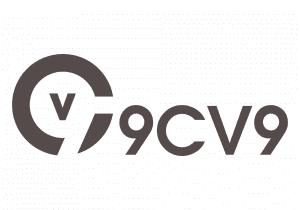















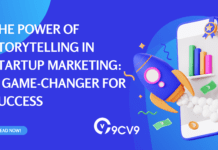





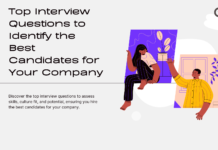
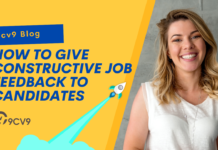

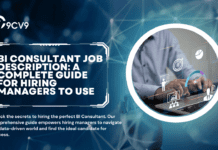





![Writing A Good CV [6 Tips To Improve Your CV] 6 Tips To Improve Your CV](https://blog.9cv9.com/wp-content/uploads/2020/06/2020-06-02-2-100x70.png)


